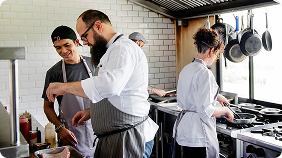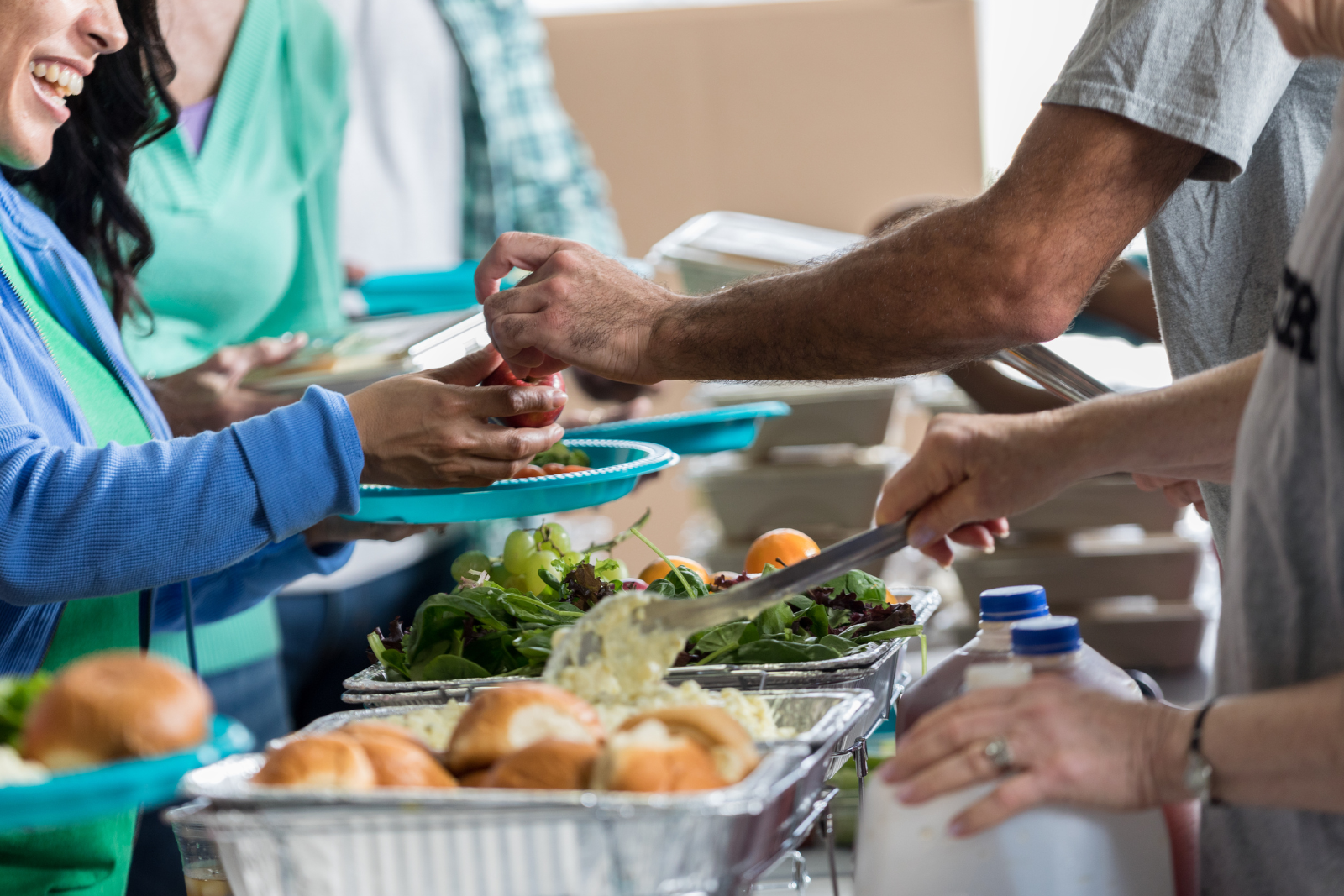The 2005 movie Waiting features a ragtag group of cooks and servers who navigate the ins and outs of working at a busy chain restaurant. The film vividly illustrates how one kitchen’s communication falls extremely short.
While the movie is meant to be a comedy and was released long before the upheaval of 2020, it is still a good reminder of the importance of having a kitchen staff that communicates clearly and professionally.
No restaurant or foodservice establishment can afford to fall short on quality communication. Read on to learn more about kitchen communication and how to cultivate effective communication in your establishment!
How important is communication in the kitchen?
Imagine this: a chef calls an order, but the line cook mishears and plates the wrong dish. A simple miscommunication means a customer receives the wrong order, and the kitchen wastes time, money, and ingredients.
That’s why clear, concise, and consistent communication is the backbone of any successful business.
Communication isn’t just important—it’s essential. It ensures the kitchen runs like a well-oiled machine, prevents accidents, enhances efficiency, and helps everyone deliver an exceptional customer experience.
As a leader, maintaining clear communication is not just about efficiency but also about ensuring the safety of your team and customers during usual work days and emergencies.
Good communication is also vital to building a healthy workplace culture. The U.S. Bureau of Labor Statistics has found that the average tenure for an employee in foodservice is less than two years, while the average across all other industries is more than twice that.1
How to communicate effectively in the kitchen
Running a successful kitchen isn't just about the food; it's about crafting an experience where every team member knows their role and can anticipate the needs of others.
Keep reading for some tips to help you boost staff morale, provide more efficient service, and, most importantly, create an environment where satisfied customers always come back for more.
Define the responsibilities of each staff member
First things first: everyone on the team, from the chef to front-of-house staff, should be crystal clear on their roles and responsibilities, including any backup roles they may need to fill.
Cross-training can be a game-changer; it guarantees that the show can still go on if someone misses their shift. Including brief stand-up training lessons when a new shift joins the kitchen for the day is one way to help bolster everyone’s knowledge.
Care for your team's emotional well-being
The pressures of the hospitality industry are real, and it is essential to monitor the emotional and mental well-being of anyone you supervise.
Whether through professional resources or simply lending an ear, offering support can significantly boost morale.
A team that feels appreciated and supported is more likely to succeed.
Maintain open lines of communication
Have you ever worked in a place where you felt like your voice didn't matter? It's not fun, and it's not conducive to a positive work environment.
Encourage your team to speak up, share ideas, and provide feedback. By creating an atmosphere of open communication, you'll foster a culture of continuous improvement and innovation.
Ensure your staff knows that their voices matter and their ideas can contribute to the kitchen's success.
Adhere to an illness-reporting protocol
Clear, straightforward expectations and procedures for reporting illnesses protect your team and customers. Ensure everyone knows and understands the procedures because clarity builds trust and reduces anxiety.
Establish communication procedures
Unified language across the kitchen and the service area will help keep your operation running smoothly. Train everyone to communicate early and often and announce their movements to prevent accidents (e.g., "corner," "behind," and "hot pan").
Train your team for emergencies
Provide staff training that covers every detail of your comprehensive emergency plans, ensuring everyone knows exactly what to do during any type of foodservice emergency. Consider conducting regular drills, keep your team up-to-date on where you store the emergency plan playbook, and make sure someone is responsible for regularly inspecting safety equipment and taking supply inventory. All of these steps will help your staff feel confident about emergency preparedness.
Proactively communicate during emergencies
Emergencies often happen unexpectedly and can put your staff at risk. Proactive communication with your team is critical to ensuring everyone is safe and capable of responding properly to an emergency. You should plan to use multiple channels to connect with staff during emergencies, including email, text, and phone calls. Social media and your website are also great ways to share information. Keep things simple and concise so your team is clear on the facts.
Anticipate customer questions and needs
Train your staff to handle customer inquiries with ease. Do they know how to address questions about the menu, dietary restrictions, and special requests? Preparing your team ahead of service turns potential hiccups into opportunities for stellar service.
Turn feedback into conversations
Feedback shouldn't be a one-sided affair. Turn it into a dialogue where team members feel comfortable expressing concerns and suggestions. This approach enhances communication and empowers your team to take ownership of their roles.
Address language barriers
Language can sometimes be a barrier in a multicultural kitchen. Consider offering language support or implementing visual aids to ensure everyone is on the same page. This small step can make a big difference in fostering inclusivity and understanding.
Come up with a list of shared goals
When everyone is working towards the same objectives, magic happens. Sit down with your team and create a list of shared goals, both short-term and long-term. Shared goals give everyone a sense of purpose and direction, motivating them to contribute their best.
Improve your communication tools and systems
In today's tech-savvy world, there are plenty of tools designed to enhance communication. Find what works for your team, whether it's a group chat app for quick updates, a calendar management program, or a task management system.
Get to know the people on your team
Your team isn't just a collection of job titles—they're individuals with unique skills, interests, and experiences. Take the time to learn about each of them, build camaraderie, and strengthen the interpersonal bonds that will help work run smoothly.
Give respect to get respect
Respect is a two-way street. You're more likely to receive respect when you first show respect to your team. Mutual regard creates a positive work environment where everyone feels valued and motivated to contribute.
Invest in robust training programs
Training programs should never be one-and-done. Training from a provider like Trust20 should be a part of your onboarding process, and you should continue to give your team regular refresher lessons. A well-trained team is confident and ready to tackle whatever challenges come their way.
The takeaway
In the end, a kitchen that communicates well excels. By prioritizing effective communication, you're setting the stage for success. Remember, it is important to lead by example. Setting a good example for clear communication leads to better team collaboration and outstanding customer experiences.
**Editor's note: This article was originally published in August 2022. It has been updated to include new data and additional advice.
Sources:
1. Bureau of Labor Statistics: Table 3. Total separations levels and rates by industry and region, seasonally adjusted - 2024 M08 Results






.png)

.png)
